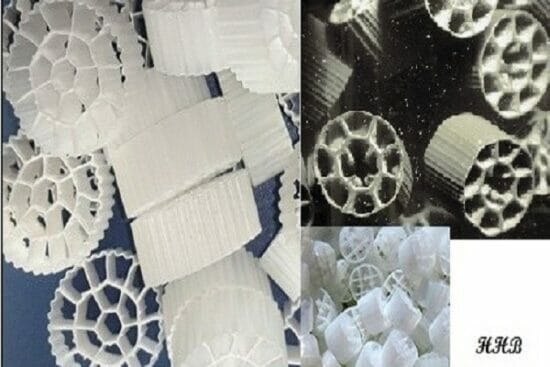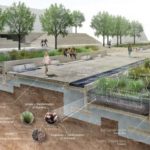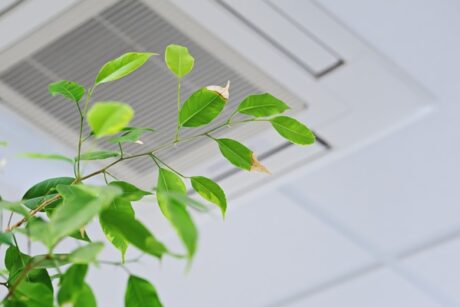No data found for Custom Course Number
No data found for Custom Course Units
Intended Audience: civil, environmental, and chemical engineers..
PDH UNITS: 4
The MBBR (moving bed biofilm reactor) process is an attached growth process that uses plastic carriers to provide a surface on which biofilm grows. The plastic carriers are kept suspended in the aeration tank by an aerator for an aerobic process or by mechanical mixing for an anoxic or anaerobic process. The plastic carriers are kept in the system by a sieve at the outlet of the tank. The MBBR process doesn’t require sludge recycle, because the biomass remains in the system attached to the plastic carriers. The required reactor size for an MBBR process is typically significantly smaller than that for an activated sludge process treating the same wastewater flow, or for other common attached growth processes like the RBC or trickling filter. It can be used for BOD removal, biological nitrification, biological denitrification, and biological phosphorus removal. This course provides discussion of and detailed examples of process design calculations for a single stage BOD removal MBBR system, a two-stage BOD removal MBBR system, a single stage tertiary nitrification MBBR system, a two-stage BOD removal/Nitrification MBBR system a post-anoxic denitrification MBBR system and a pre-anoxic denitrification MBBR system. This course is intended primarily for civil engineers, environmental engineers, and chemical engineers. After completing this course you will be familiar with the general components and configuration of an MBBR wastewater treatment process and be able to make typical process design calculations for an MBBR process.
Learning Objectives:
At the successful conclusion of this course, you will learn the following knowledge and skills:- Know the differences between attached growth and suspended growth biological wastewater treatment processes
- Be familiar with the components of and the general configuration of an MBBR wastewater treatment process
- Be able to calculate the loading rate of a wastewater constituent to an MBBR process (in lb/day and g/day) for a specified wastewater flow rate and constituent concentration
- Be able to calculate the required carrier surface area for an MBBR wastewater treatment process for a specified SALR and loading rate.
- Be able to calculate the required MBBR tank volume for specified carrier surface area, carrier specific surface area and carrier fill %
- Be able to calculate the liquid volume in an MBBR tank for known tank volume, carrier volume and carrier % void space
- Be able to calculate the BOD, NH3-N, or NO3-N removal rate for known values of the surface area removal rate (SARR) and design carrier surface area
- Be able to calculate an estimated effluent BOD, NH3-N or NO3-N concentration based on known values of the appropriate loading rate, estimated removal rate, and design wastewater flow rate
- Be able to make process design calculations for a post-anoxic denitrification MBBR process, including required tank sizes, estimated effluent concentrations, alkalinity requirement and carbon source requirement
- Be able to make process design calculations for a pre-anoxic denitrification MBBR process, including required tank sizes, estimated effluent concentrations, and alkalinity requirements
Once completed, your order and certificate of completion will be available in your profile when you’re logged in to the site.










